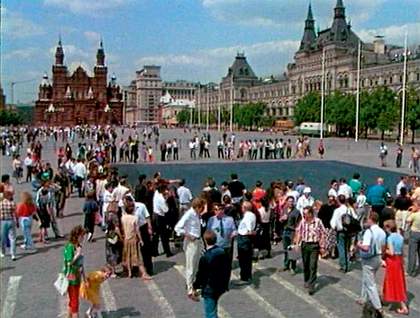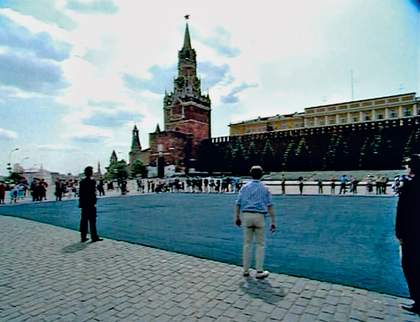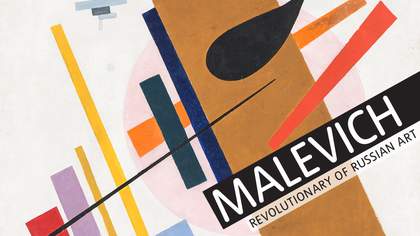Since the formative stages of the art collective Neue Slowenische Kunst (NSK) in Slovenia in the early 1980s, our mythology has been importantly influenced by the Russian avant-garde in general, and Kazimir Malevich in particular. The impact has been manifold, ranging from our admiration of artworks to the potential we saw in repeating them in order to gain insight into where the avant-garde had gone wrong while building the future. But when quoting the avant-gardist Russian Malevich, Irwin was also referencing the Belgrade Malevich, a conceptualist.
Of all the works produced by Irwin relating to Malevich, Black Square on Red Square 1992 is undoubtedly the largest, and most probably the best known. It forms part of a triptych, the other two being the black cross painted on the roof of the Clocktower Gallery in New York and the dance performed in a circle in a field in Slovenia by the members of NSK with girls dressed in Slovenian national costume.
In Moscow, we spread out a 22-metre square of black canvas on Red Square in front of the Lenin Mausoleum in such a fashion that, combined with the red of the events the square is named after, it formed a composition, a painting visible from the air. The canvas itself was a drape loaned by the Bolshoi Theatre. It turned out to be heavier than we had anticipated – too heavy for members of Irwin alone to carry from the edge of the square to its designated spot, so numerous friends came to our aid, including many Russian artists. Our Russian friends were certain we would be prevented from carrying out our plan by the police, uniformed or plain-clothed, both kinds numerous on the square at all times, and that we would be arrested. They had good reason for their apprehension. Without a special permit, interventions on Red Square are forbidden, and all who had violated this regulation before us had ended up in police custody. But nobody tried to stop us. When people gathered around the unfurled canvas, a man in (I believe military) uniform even cautioned people not to step on it. After approximately half an hour we folded it up and loaded it back in the van.
A friend of ours who had observed the event later remarked that she’d felt it possible the police would choose not to act, but that she had hoped the visitors to the square, ordinary people, would have stopped a black square from being unfolded in the middle of Red Square.



